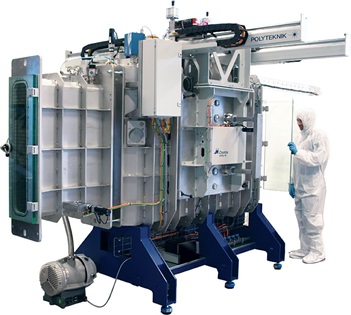Modern low-energy windows insulate so well that they can dew up on the outside in cold weather. Now, DTU Energy in collaboration with the Danish companies Velux and Polyteknik will make it possible to equip the windows with a cheap and durable anti-dew coating using advanced plasma techniques.
 Triple glazed low-energy windows have become sufficently efficient and insulating to be able to actually contribute positively to the energy balance of a house: The energy of the sunlight let in by the window can exceed the heat loss to the outside through the window. In fact such windows can insulate so well that during some types of weather, dew condensate on the outside surface of the window. Even if one can take comfort in the fact that this is due to the high efficiency of the window, it can be a little frustrating to look at from your living room. The problem can be minimized by using a special coating of the outer pane but hitherto this has required expensive and rare materials. Now, the project SmartCoating with the participation of DTU Energy and the companies Polyteknik AS and Velux A/S will develop a cheap alternative coating which will create a much larger market for anti-condensation windows. The project is supported by the Danish Innovation Fund.
Triple glazed low-energy windows have become sufficently efficient and insulating to be able to actually contribute positively to the energy balance of a house: The energy of the sunlight let in by the window can exceed the heat loss to the outside through the window. In fact such windows can insulate so well that during some types of weather, dew condensate on the outside surface of the window. Even if one can take comfort in the fact that this is due to the high efficiency of the window, it can be a little frustrating to look at from your living room. The problem can be minimized by using a special coating of the outer pane but hitherto this has required expensive and rare materials. Now, the project SmartCoating with the participation of DTU Energy and the companies Polyteknik AS and Velux A/S will develop a cheap alternative coating which will create a much larger market for anti-condensation windows. The project is supported by the Danish Innovation Fund.
Dew is created when air is cooled sufficiently to make the water vapour in it condense to droplets. For badly insulated windows this is usually a problem on the interior side: The innermost pane is so cold that dew condensates when the humid indoor air meets the pane. This rarely occurs with low-energy windows, since they insulate so well that the inner pane is close to room temperature. On the other hand, the low heat loss through the window can make the outer pane so cold that the water vapour in the outside air condenses on the window. This phenomenon can be avoided by depositing a thin, electrically conducting layer on the outside of the pane. This limits the radiative heat transfer from the glass to the surroundings which can make the pane colder than the air. The only problem is that the material used today, indium tin oxide (ITO), is very expensive. Indium is a rare element, and there is already a large demand for ITO for use in, e.g., solar cells and touchscreens.
“We have brought together a very strong team for the SmartCoating project: Polyteknik AS has a deep knowledge about plasma deposition techniques on an industrial scale which complements DTU Energy’s extensive insight into plasma processes and thin film characterization. The third project partner, Velux, brings advanced test facilities and key insights about the window market to the project which in this way covers all the needed competences”, states senior scientist and project leader Eugen Stamate from DTU Energy.